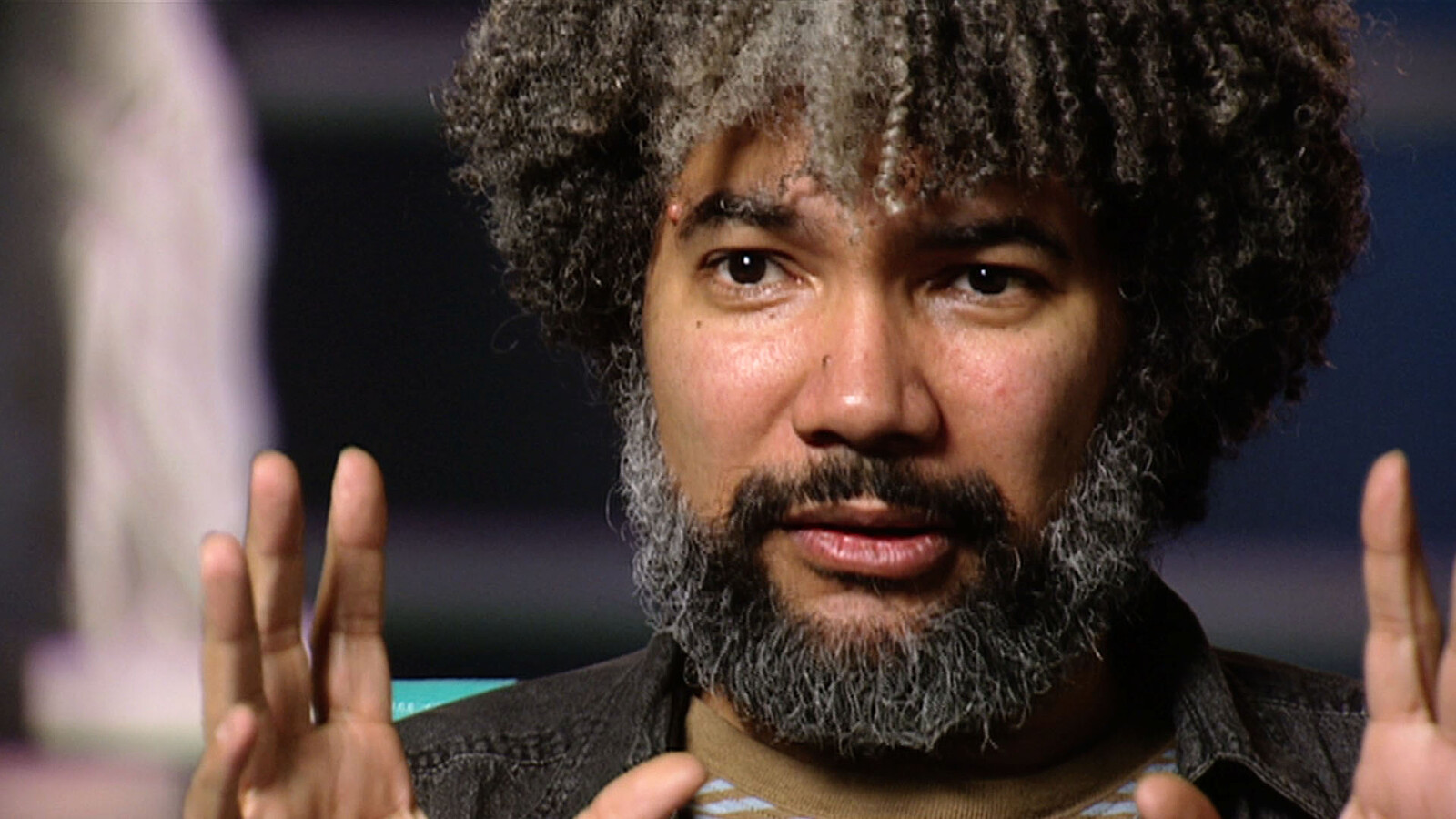Long before Nazi violence came to be conceived as beyond comparison, Black radical thinkers sought to expand the historical and political imagination of an anti-fascist left by detailing how what could be perceived from a European or white vantage point as a radically new form of ideology and violence was in effect continuous with the history of (settler-)colonial dispossession and racial slavery.
Social scientists regularly work in study groups and research groups. They develop theses and propositions and experiments based on group work. Whereas we in the humanities are trained not to do this. We are trained to write in a single voice. It was very interesting to me last semester teaching a class with practice-of-art students called “Radical Composition.” From the very beginning, students were divided into groups of three, and each group had to create a radical composition in response to a series of assigned visual, sonic, and written texts. They were musicians and visual artists and movement artists and art historians and African American Studies students. And they all said the same thing: we’ve never been taught how to work in a group. We have our single-person senior shows. We produce our own body of work. Sometimes we help each other out, but it’s not multiauthored. We don’t all take credit.
I look at music as a sculptor might. I get the materials and just have this lump of sounds sitting there, and then I chisel away at it until it starts to sound like something. I say it’s techno, but I’m not sure that it’s actually techno. What is techno? That’s a question. But maybe what my music does is define what it could be, or what else it could be. Genres can be limiting.
What do they know of techno, that only techno knows? This is a good question to ponder, I suggest, even though or perhaps because it has no answer. The very act of asking it, without the capacity of a satisfactory answer, delivers us to that paradoxical space of affirmative negation. This is the space, I think, that is in turn necessary for “unlocking the groove” wherein the difference that techno is and still might yet be lies.
Of course, “Litcoin” crashes and everyone in South Side is left with nothing. Odom, the amateur astronomer, is depressed by the lost opportunity to purchase a powerful telescope. A rare comet is making its way around the solar system and he wants to see it. But he is broke again. At this point, the show makes a leap into the cosmic. All along, and all around the South Side, they have been surrounded by the cosmic. It can only be accessed by a form of wonder (thaumazein) that Hannah Arendt described in her book The Promise of Politics.
Within the shared sociohistorical field of black cultural practice, within the neglected realms of the studium, homogeneity and heterogeneity are instead bound up in shifting but complementary relation. In this model, repetition and differentiation are not antagonistically opposed. Difference is not exclusionary, and similitude is not unprepossessing.
The genocide of relation can never be traced back, quite. Relation cannot be propertied. What is lost cannot be parsed.
In contemplating Camera Lucida now, in the wake of the fortieth anniversary of its publication, I am moved to ask: How could a book so intensely bound up with photography and loss show so little generosity, and why, today, should we heed its call? Beyond this, what might insights from black studies bring to bear on a book so indebted to the identification and rejection of difference in the expropriative formulation of Barthes’s inner self?
If we begin with the understanding that police protect property and their owners, we can expect this to be its primary consequence: those who have very little property in a community are bound to experience a frequency of bad encounters with law enforcement that is much higher than those who have a lot of property. And so it is. What we find in the US, the world’s top ownership society for the past hundred years, is a vast jail, prison, and parole system filled with men and women who do not own much of anything. From this fact, which links poverty to the business of policing, we also find an explanation for the overrepresentation of black Americans (who make up about 13 percent of the general population) in the US’s state prisons (they make up 40 percent of the penal population).
What if we sought to comprehend this new horizon as a grasping of Black individuation from within the cultural weight of colonialism, where one finds the measure of their validity in the problems we confront? What if the individual in relation to whiteness was not given as a fact preexisting the operation of being and becoming Black? What if the image of Blackness, and thereby the Black individual produced by colonialism, was merely one element of individuation constituting a false assumption of the exhaustion of Black existence? Finally, what if Black existence was grasped not as a final outcome in recourse of the presumption of racial logics, but as a process of individuation that reformulates the categories of knowledge, thereby shifting ontological assumption from one that exists in relation to whiteness to one who’s principle of genesis becomes internally generated and invented from within?
Journeys with the initiated at e-flux and Participant Inc






























